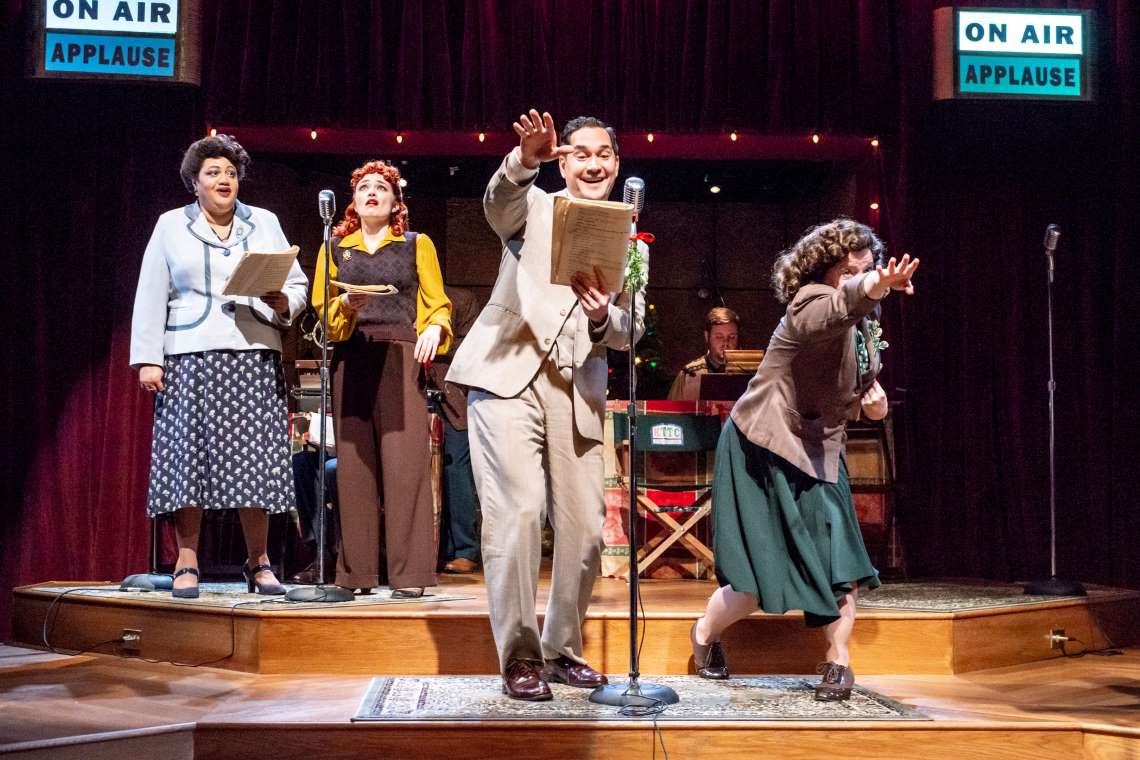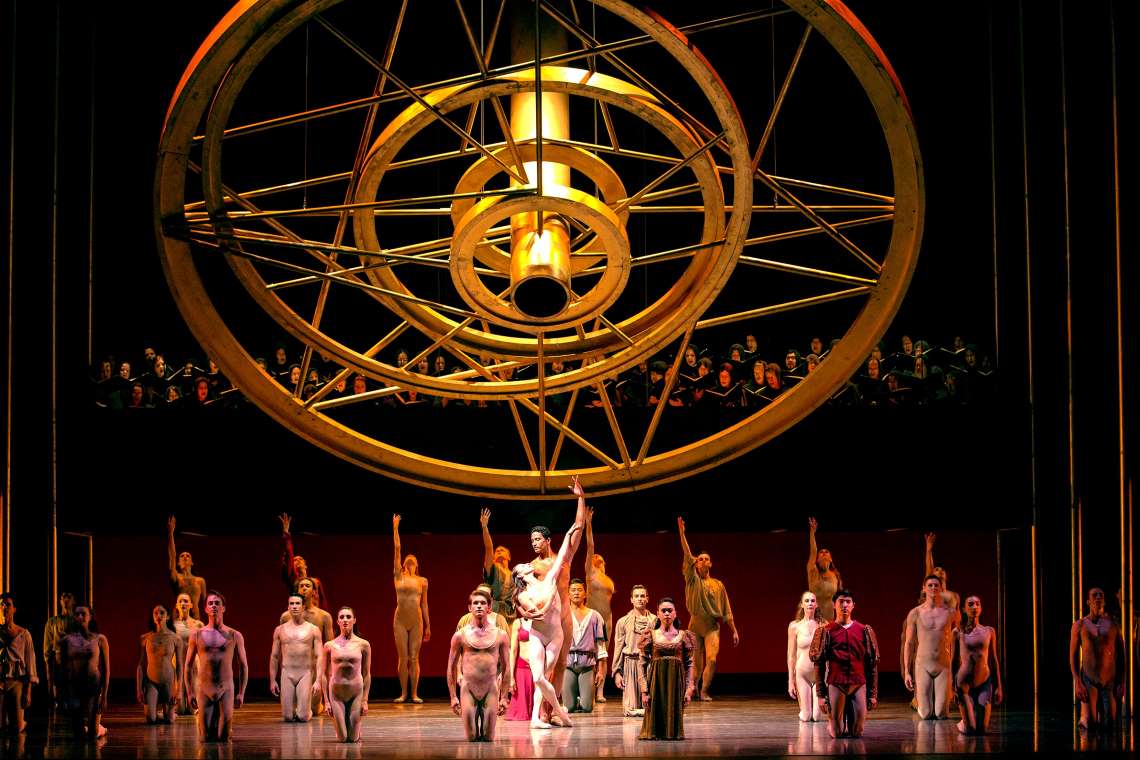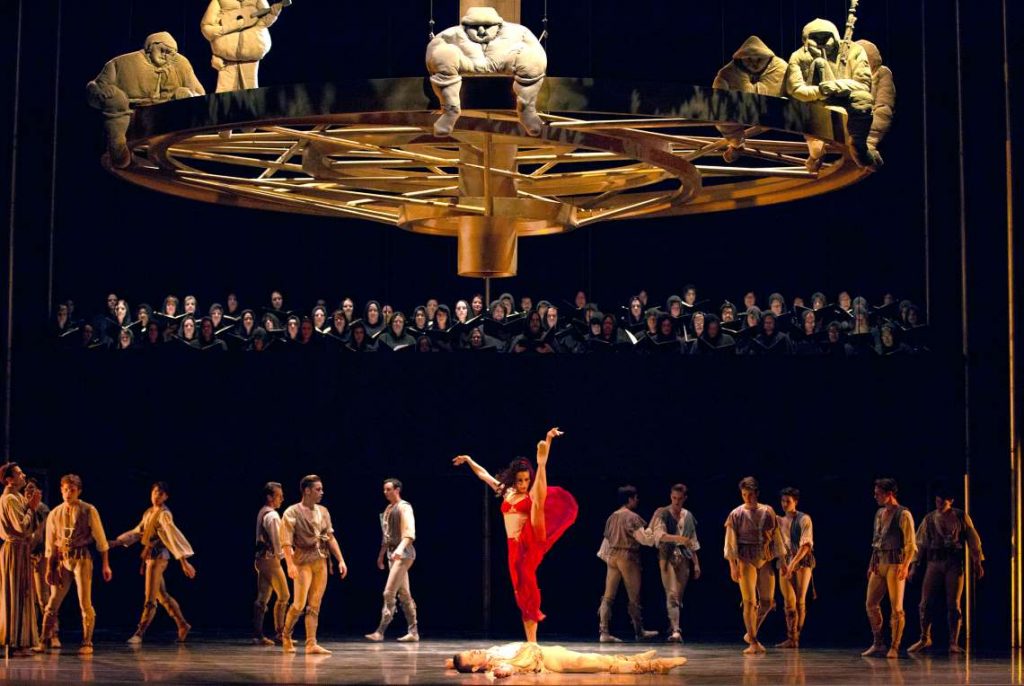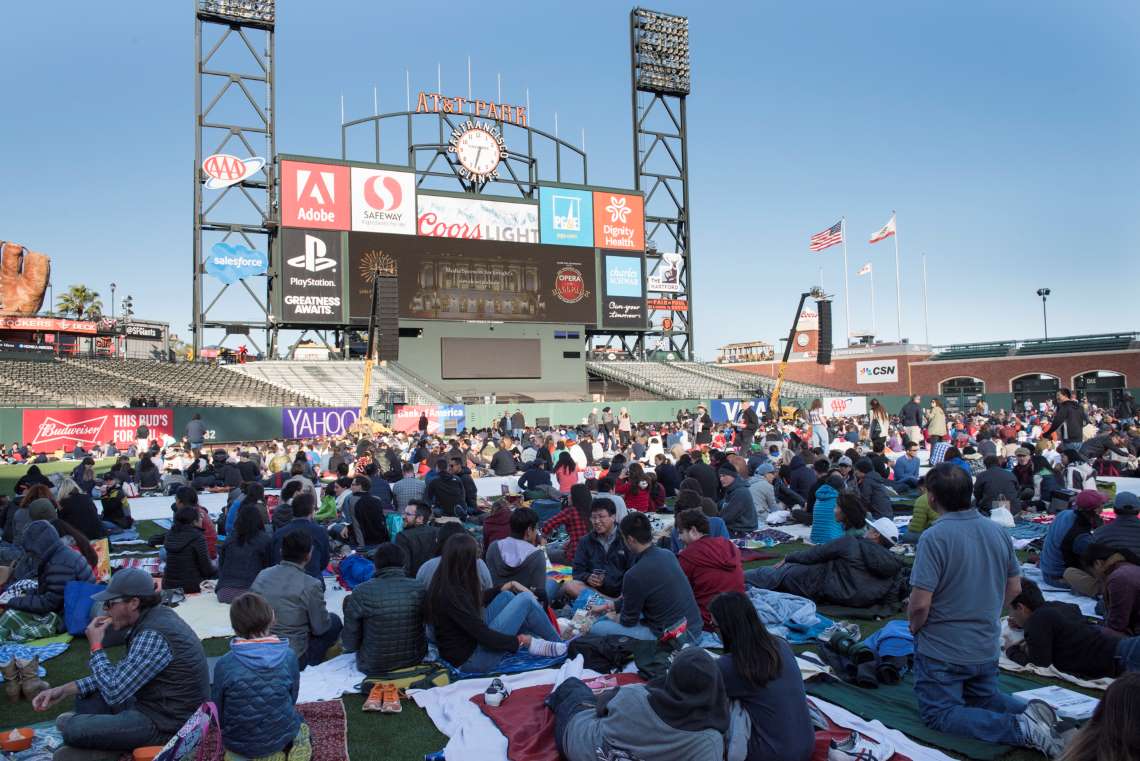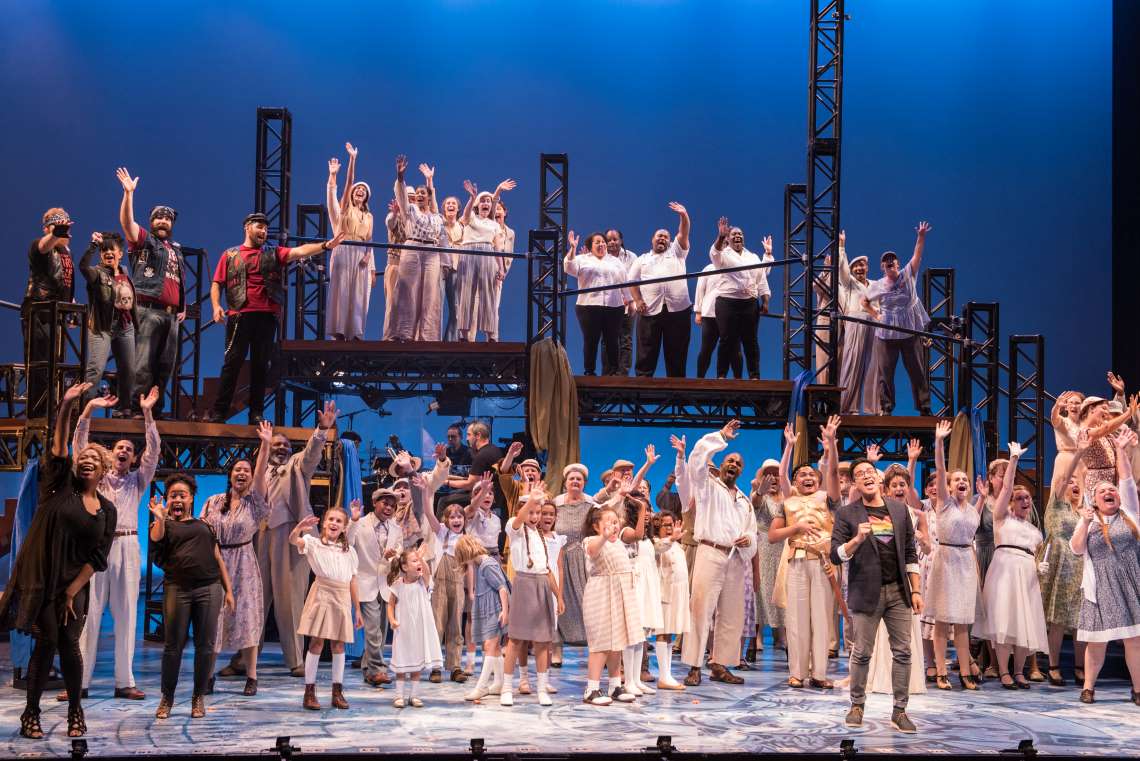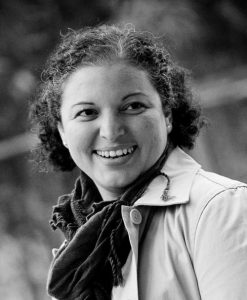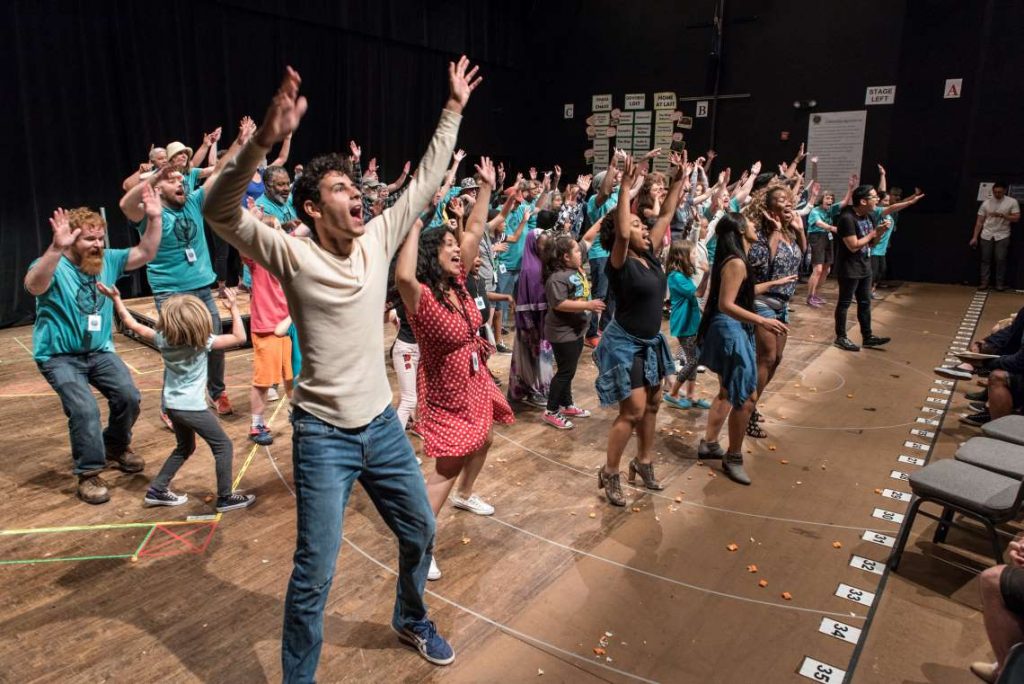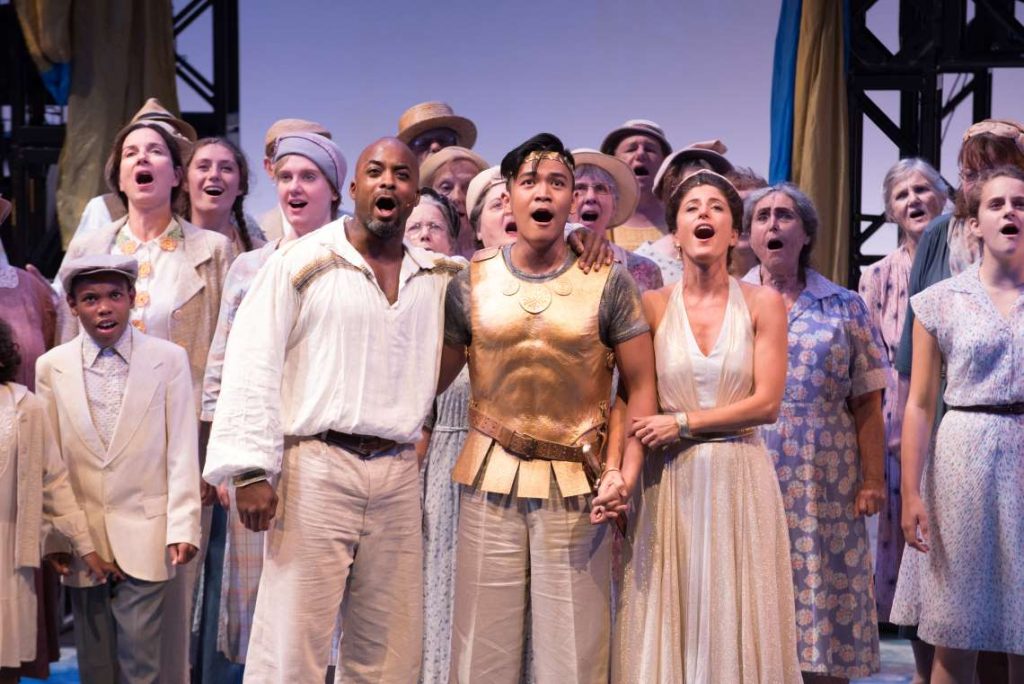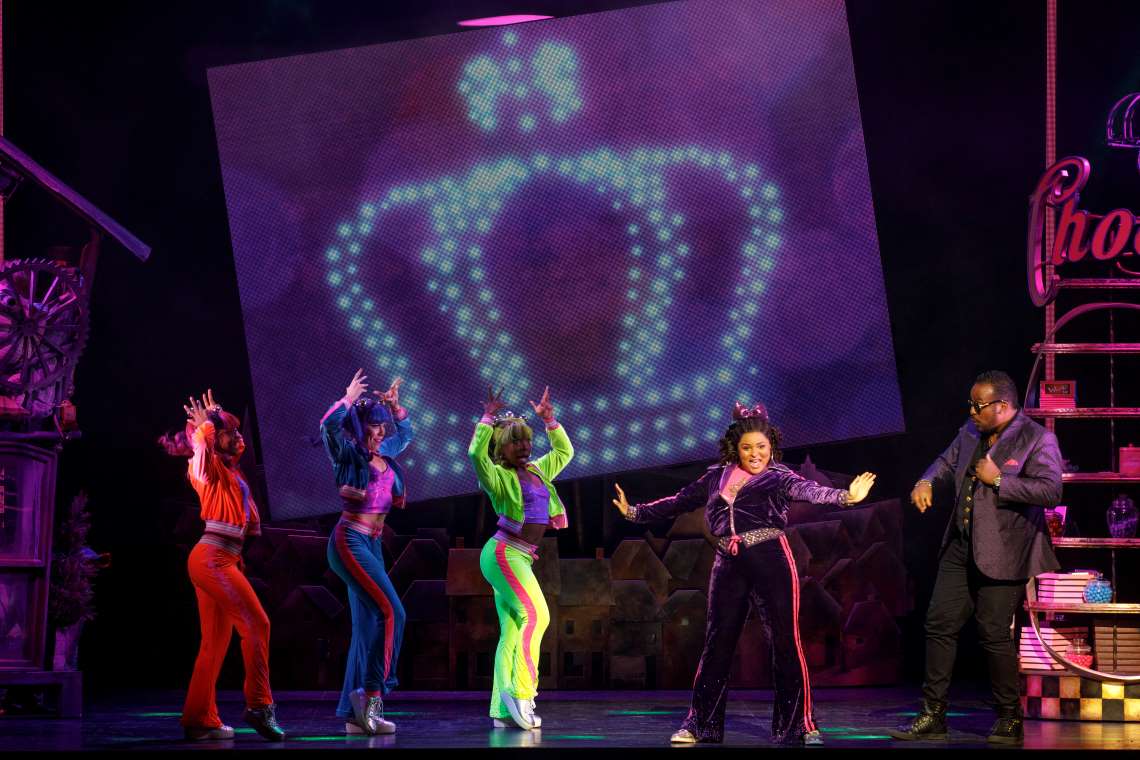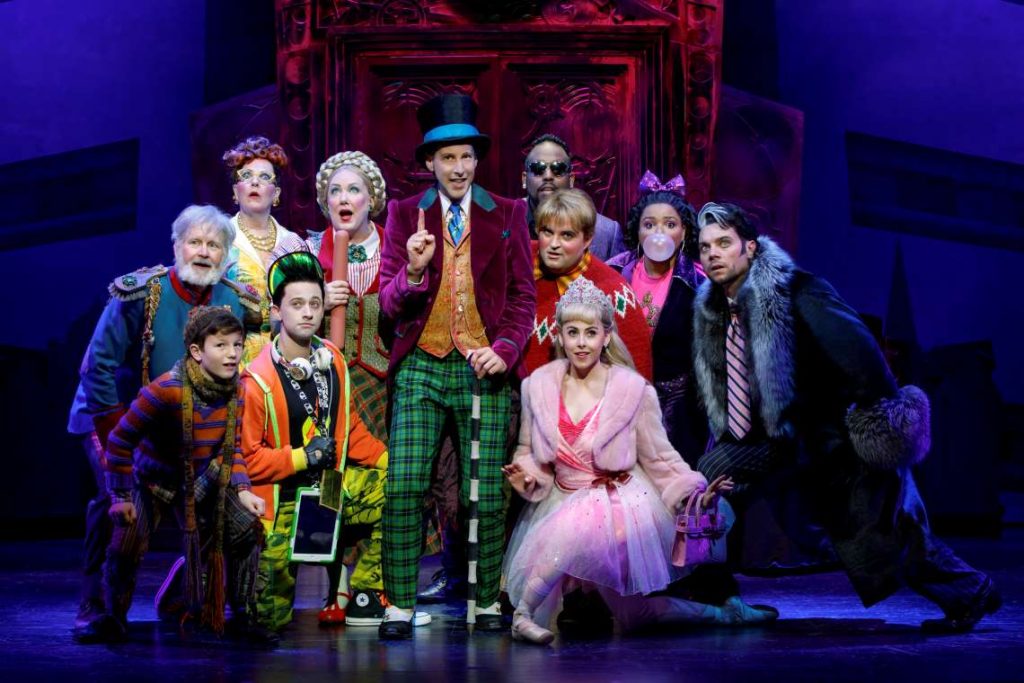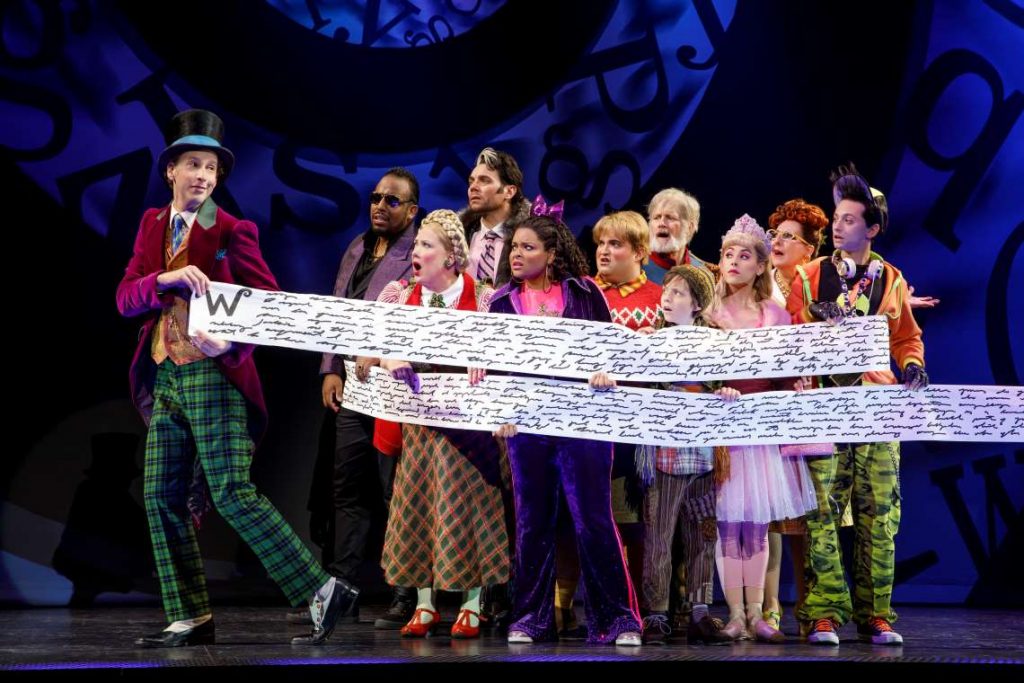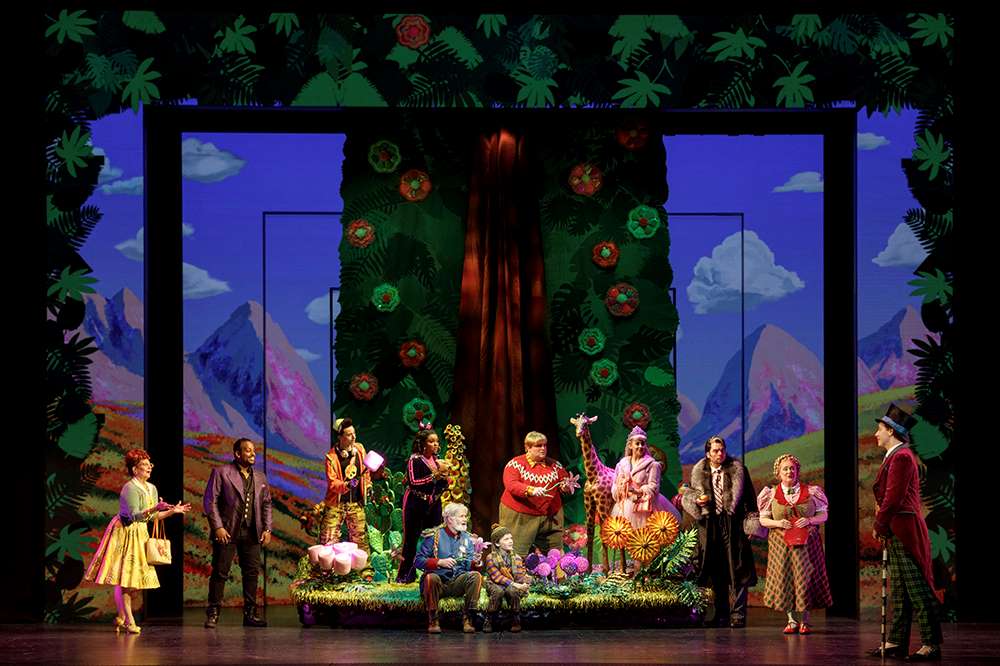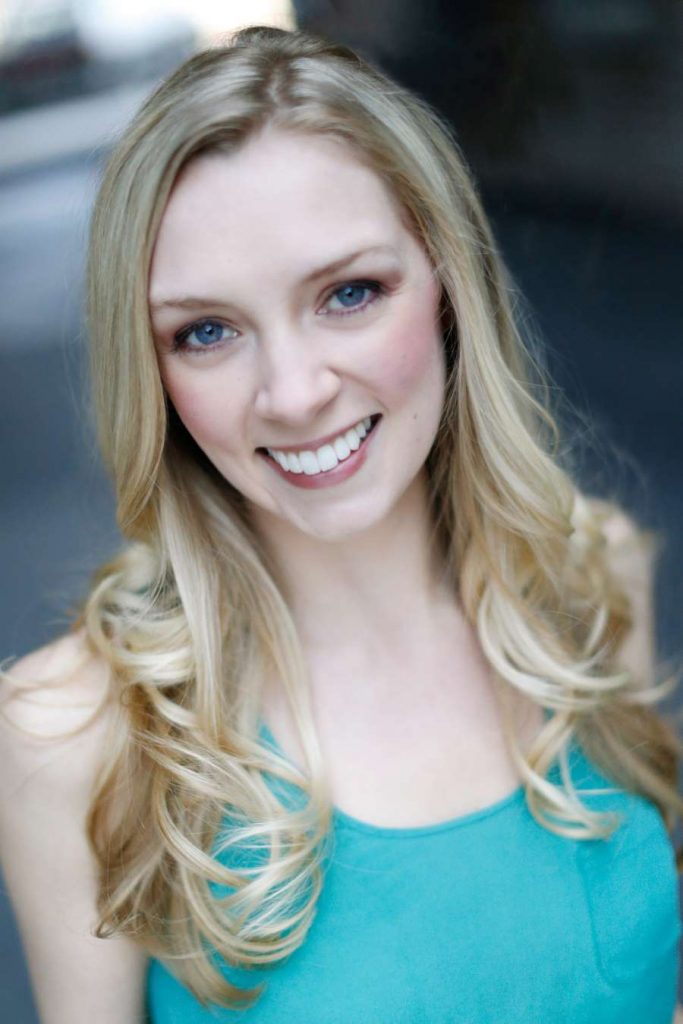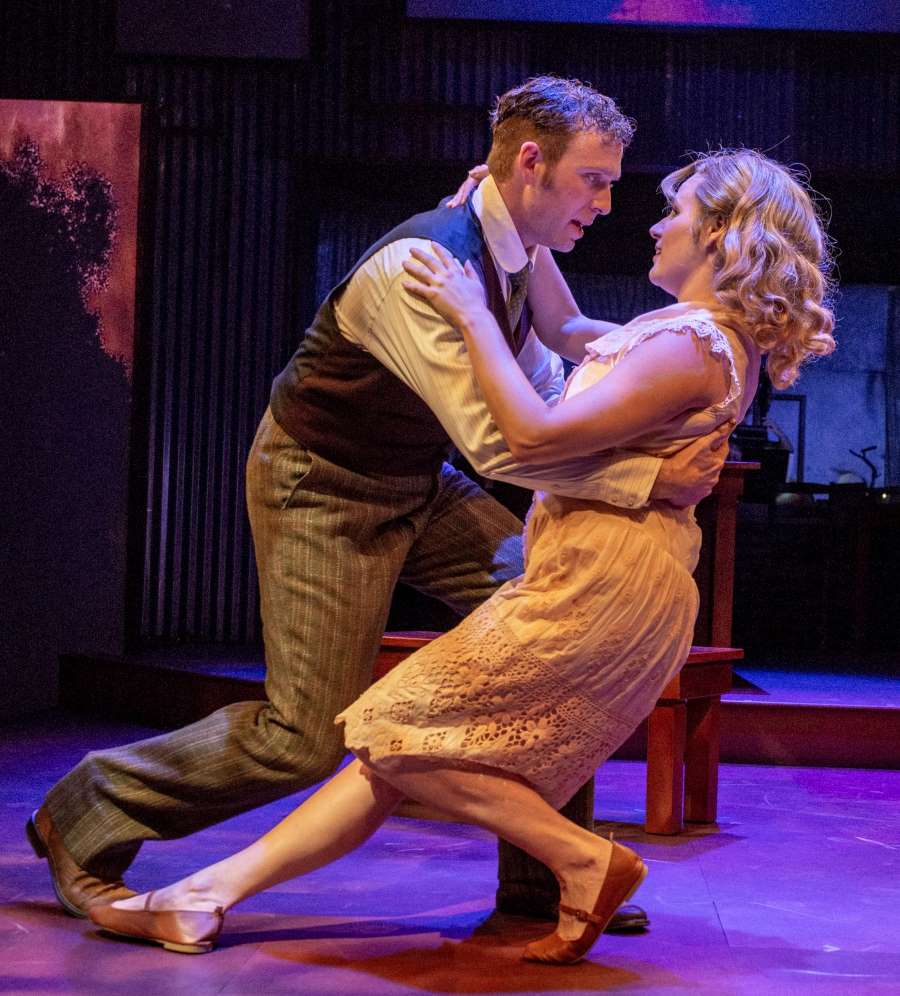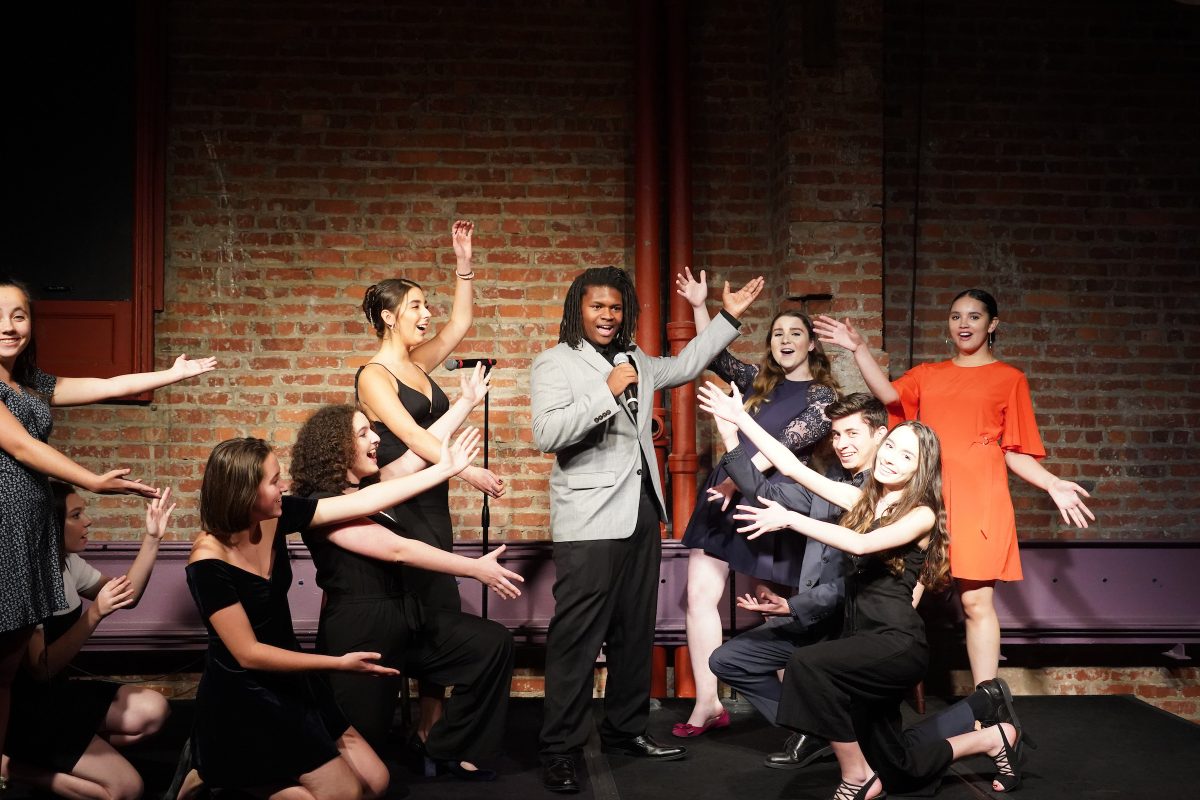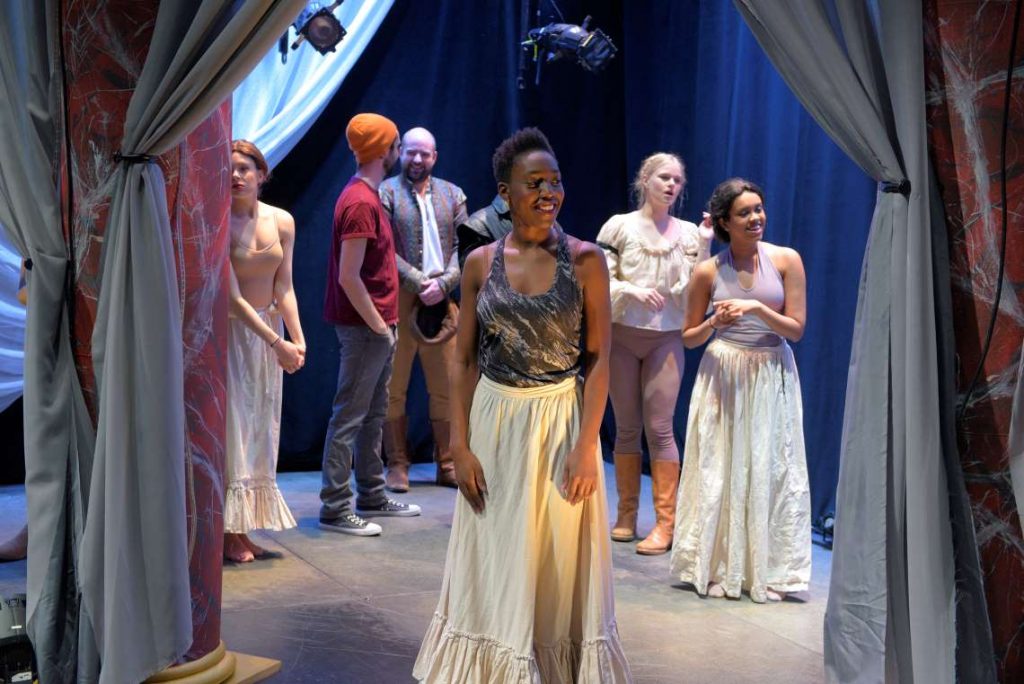Richard Nguyen Sloniker is a charming comedic actor. So appealing that he’s doing his second Cary Grant role at Taproot Theatre Company this year. After successfully portraying the hapless Mortimer, nephew of the murderous aunties in Arsenic and Old Lace, he’s back as the much more urbane and, yes, charming angel Dudley in The Bishop’s Wife this month.
For those who caught this black-and-white 1947 classic on late night television, the harried Bishop (originally played by David Niven) is so busy raising money for a new cathedral that he’s neglecting his family at Christmas. When praying for a miracle, he gets Dudley (Cary Grant), a far too handsome angel who seems more concerned in making sure that the Bishop’s wife has a pleasant holiday break than helping the Bishop. A variety of comedic confusions ensue although all is well by the Christmas Eve service.
This Taproot production directed by Karen Lund uses the radio play version of the popular Christmas movie, adapted by Karen and Mark Lund, and sets the staging at a fictional “KTTC” complete with commercial jingles and sound effects. So Sloniker essentially plays an actor playing an angel. We talked to him about the challenges and joys of this Christmas play as well as switching his career from science to theatre in college.
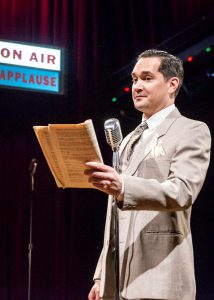
Rosemary Jones: Every actor has to decide whether or not to watch previous performances of a role. Did you want to watch Cary Grant’s performance as Dudley or did you want to stay away from the movie?
Richard Nguyen Sloniker: I did watch the movie after the first rehearsal when Director Karen Lund suggested we watch it for the style of the time period. By then I had already made some personal choices for Dudley. The movie was a useful resource, but ultimately the character I created was out of my typical work and not Cary Grant’s performance.
The format of The Bishop’s Wife is essentially a play within a play, as you’re performing the radio version onstage. What are some of the fun aspects of this?
The best, by far, is working with the cast. It’s such a treat to not only act with Chelsea LeValley (Julia, the Bishop’s wife), Calder Jameson Shilling (Henry, the Bishop) and everyone, but to watch everyone’s performances outside of my scenes. I’m blown away at the talent Karen brought together. If you include Music Director Michael Nutting, who composed the score and attended many rehearsals, there are four talented pianists within this company! Amazing.
What are some of the challenges of doing this as a “radio” performance?
This is my first radio play! I quickly realized there are different techniques involved. I’m used to being off-book and looking into the eyes of my scene partner. But with scripts in-hand, you have to balance reading the text, engaging with your scene partner, making sure the audience can see you…all while speaking into a microphone. Talk about walking and chewing gum!
You’ve performed in many of our regional theatres, Village Theatre, Seattle Children’s Theatre, ACT Theatre, Seattle Rep—what distinguishes a Taproot show for you?
Karen Lund (associate artistic director), Mark Lund (design director) and Scott Nolte (producing artistic director/CEO). They are always welcoming to actors. Even when visiting, I’ve always been offered good conversation and kind words. Both Arsenic and Old Lace and The Bishop’s Wife felt like a homecoming.
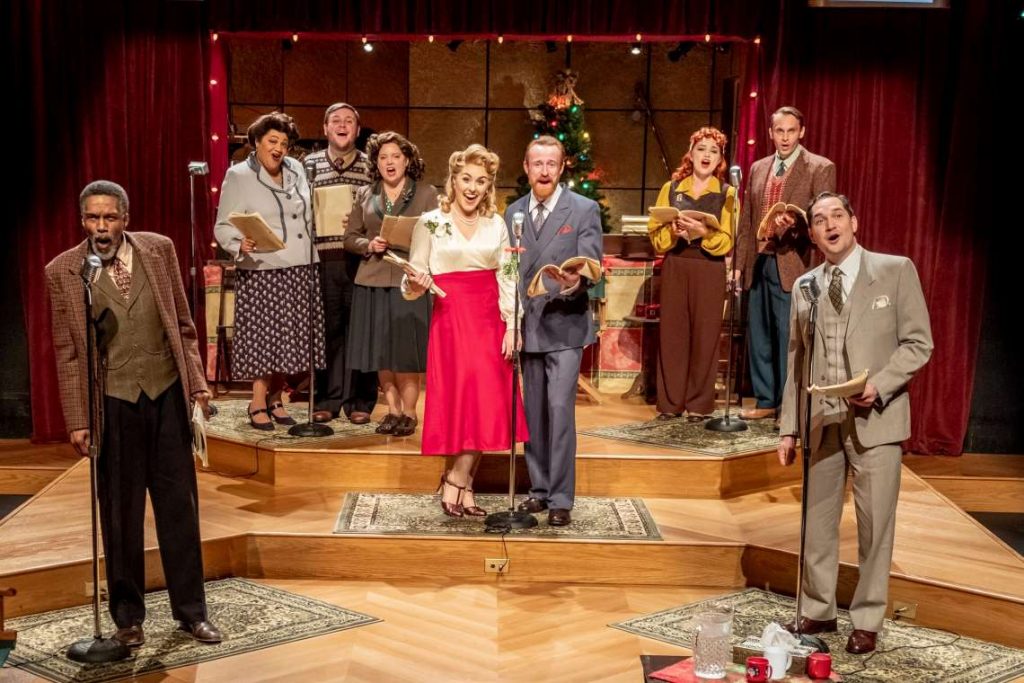
How did you go from earning a B.S. in Cellular, Molecular and Developmental Biology to a M.F.A. from University of Washington’s Professional Actor Training Program?
When I was younger I always loved science. I thought I’d grow up to be a doctor. But I have also always performed in theatre. Even while I was working toward my undergraduate degree I was still performing in Seattle fringe theatre. When it came time to decide on graduate schools, I thought that if I became a doctor I wouldn’t be able to perform again. I couldn’t live a life without performance. So I auditioned for one grad school: the University of Washington School of Drama. And luckily, I was accepted! I still love science, and regularly read scientific articles. I don’t think that will leave me anytime soon.
How does having studied both science and the arts make you a better artist?
I approach my characters very rationally. I am a Stanislavski, action-based performer. I need to know physiologically what my character wants, and what tactics they will attempt in order to get it. My science background keeps me asking why characters do what they do; what textually-based clues can we derive from a script? I’ve never been one to base a performance on “feeling.” I have also never played the color orange.
The Bishop’s Wife is playing now through December 28 at Taproot Theatre Company. Tickets are available online or at 206.781.9707.
Rosemary Jones has written about arts and culture in the Pacific Northwest for the Cornish Magazine, Capitol Hill Times, Encore, Examiner.com and others. Additional work can be seen at rosemaryjones.com.
